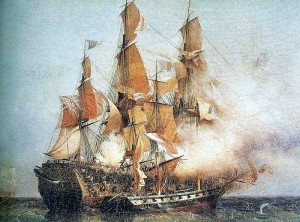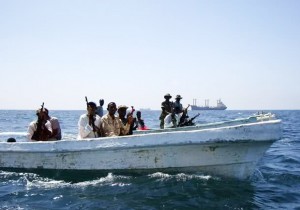DOWN TO THE SEA IN SHIPS
After a couple of voyages as a youth, a certain young man took to the sea to seek his fortune in 1674. He shipped out of London, bound for the Caribbean and Jamaica. He ended up making 3 voyages around the world, and in the process became a superstar.
His written observations and drawings of Galapagos Islands flora & fauna were reference works that Darwin took with him on the voyage of the Beagle some 150 years later (his materials were used by both Darwin and von Humboldt in the formulation of their theories).
His observations and analysis of the winds and ocean currents were praised by both Captain Cook and Lord Nelson, and became standard references for Captains and navigators for a couple hundred years.
His travel writings created a new genre for publishers and were the basis for Daniel Defoe’s Robinson Crusoe and Jonathan Swift’s Gulliver’s Travels.
He wrote scientific papers for, and lectured at, The Royal Society.
He was a generalist: an adventurer, naturalist, entrepreneur, author, explorer, cartographer, ship’s Captain and navigator. He was a sought-after guest of royalty and the intelligentsia of the early Age of Enlightenment.
Who was this guy?
His name was William Dampier, and he was a pirate.
As the career of Dampier suggests, not all pirates ran around with a knife clamped in their teeth, a cutlass in one hand and a flintlock pistol in the other. While generally not appreciated by merchants and ship owners, piracy (by whatever name) was otherwise recognized as a legitimate and attractive source of revenue by governments (who granted permission and took a cut) and the investment community (who couldn’t get enough of the high returns). And it was definitely a way for a young entrepreneur to make it big and get ahead.
Piracy was and is a business.
There are a lot of interesting points to be made about this business, so in the rest of the post I’ll present the info primarily in bullet form. You’ll be able to clip through it, finding what interests you.
Very Brief History of Piracy
- When did it start? Basically, since there’s been commerce at sea, there’s been raiding at sea … and that’s piracy
- The 1st historical mention of piracy is on an Egyptian clay tablet inscribed more than 3000 years ago
- Piracy appears prominently in the writings of ancient Greeks and Romans, who controlled the Mediterranean from around 500 BC to about 650 AD (along with the Byzantines during the later part of that period)
- During the time of the Arabian Empire (650 – 1150AD), piracy (official and otherwise) cut off normal seaborne commerce in the Mediterranean, which had the profound effect of isolating Europe and shifting European economic power from merchants to landowners, thereby establishing feudalism and the resulting Dark Ages
- As the Dark Ages waned and Mediterranean commerce reasserted itself, so did piracy
- By the 1500’s (and clear into the 1800’s) piracy was so prevalent that it became a legitimized, legalized, regulated, state-sponsored international business (more on this in a minute)
- It was at its peak during the Golden Age of Piracy (late 1500’s – early 1700’s), at the time our friend William Dampier plied the seas, and was in large part focused on the Caribbean market, conveniently located nearby Spanish treasure ship routes
- Sir Francis Drake, and Sir Walter Raleigh earned their “Sirs” in no small part because of their state-sponsored piracy against Spanish ships and ports
- It’s of little surprise that one of the reasons King Philip II sent the Spanish Armada to England to wipe out British sea power and dethrone Elizabeth was to put a stop to the British plundering of Spanish ships filled with gold (that, by the way, the Spanish had plundered from Indians, who, by the way, had the gold mined by yet other Indians who they had enslaved)
Where to go with your piracy startup business
With the pirate business booming, various ports emerged as centers for the industry. Chief among them was Dunkirk, in France, on the English Channel. It was the best place to go for anything a prospective pirate needed or wanted: ships, ship refitting, guns, powder, cannon balls, sails, rope, lawyers, venture capitalists, sailors looking for a voyage, food and fresh water for a voyage, navigation gear, maps, etc. It was the Silicon Valley of piracy.
Starting a piracy business
Here’s what it took to start a piracy business. See if it looks familiar.
1. Put together a prospectus and plan
2. Take it to investors (in Dunkirk or some other piracy center), and get needed venture capital
3. Get a license (in this case a Letter of Marque certifying that you are a legitimate privateer, legally authorized to prey on the ships of countries your government doesn’t like), either
- From the King/Queen or representative if you were, say, French, Spanish or British, or
- From the Secretary of State if you were an American
4. Capitalize your operations (in this case, outfit a ship for the job)
- Relatively small, fast & agile ship with a lot of cannon; shallow draft (to escape into waters where heavy enemy gunboats can’t follow)
- Hire a big crew that can overcome a small crew
- Provision the ship
5. Launch the business (!)
6. Go after a good market (i.e. weigh anchor for promising waters)
Doing piracy business – rules of engagement
When you arrive in the waters of your market – then what?
- Once a suitable victim has been found, haul alongside and demand surrender
- If they don’t agree, attack until they do
- If they do agree, or once they surrender, then meet with the victim Captain in your cabin and negotiate terms
- Now remember, your pirate ship is quite small and made for the purpose of attacking merchant ships, not for hauling cargo
- This means you can at best take on only a small fraction of the freighter’s cargo
- No problem. This is all handled by the Law of Nations. The victim Captain will, as required by this international law in such circumstances, sign a contract that your lawyers have prepared in advance, that you (as possessor of a suitable Letter of Marque) now own the cargo, and that it will be warehoused at a named port convenient to you, to be collected at your pleasure, sometimes along with the cargo ship itself. And in exchange for not killing the surviving crew, you are given additional generous terms
- The contract also gives legal protection and safe conduct of the ship and cargo to the port of convenience, against further capture by ships of your country or allies
- The victim ship, Captain and crew are then sent on their way to the port of convenience
- You are now free to go forth and repeat this process with other potential victims until you decide to bring your expedition to an end
Courts in Ports
- If a ship fails to show up at a designated port of convenience as agreed, your agent will notify the court system, an international watch for the ship will be begun, and when found the Captain will be brought before a court to make good the contract he signed with you, together with paying punitive damages – and will be jailed at least until those arrangements are completed.
- You (or your investors’ agents) are now free to sell the cargo and the cargo ship through one of the many brokers available for the purpose. Perhaps you could sell the ship back to the original owners; after all, they’re down a ship and could use one.
- The investors, you and the crew get well-defined shares of the take
- With your share, and the reputation you’ve earned with your success, you’re now ready to take on your next venture, with terms even more favorable to you (“Ah, it’s a pirate’s life for me, for me, it’s a pirate’s life for me!”).
The truly amazing thing is that the above isn’t fantasy. It’s how the business actually worked during the Golden Age of Piracy. Piracy was institutionalized.
Piracy Today
All that’s changed now, but piracy is still with us. I haven’t checked the situation in about a year, but the last time I looked, here’s how it stacked up:
- There are about 200 – 250 reported piracy attacks/year, worldwide
- Current piracy hotspots are around the Horn of Africa (esp. Somalia) and the South China Sea
- The activity has greatly declined in the S. China Sea because the 2005 Sumatra tsunami devastated pirate operations (and everything else) in the region
- There’s continuing rapid growth in the Somalia area
The Business of Piracy in Somalia (and the Yemen)
The right factors are present for a thriving piracy industry: poverty driving desperate ventures, no government to interfere, safe haven for operations, long coastline to be defended, proximity to heavy shipping.
Business Model
- Customers
- Ship owners/leasers, cargo owners, insurers
- Value Proposition
- In the case of commercial shipments: In return for negotiated ransom, we pirates will return the crew unharmed, the ship unharmed, the cargo unharmed and relieve the ship and cargo owners and insurers of further lost opportunity costs, and their customers of time-to-market costs from delayed product delivery
- In the case of relief goods for humanitarian aid (big in the region), such as food & medicine, to locations in crisis: In exchange for negotiated ransom, we pirates will allow the ship to proceed to the starving nation, etc.
- Market Opportunity
- Gulf of Aden: about 100 ships/day
- 3.3 M barrels of oil/day
- 33% success rate in 110 attacks off the Horn in the first 8 mo. of ’09
- This is equivalent to about one successful hijacking / week
- Geographic Scope of Market
- Gulf of Aden
- E. Coast of Somalia
- 200+ mi. out into Indian Ocean (600 mi in a few cases)
- Competition
- Yemeni pirates north of The Horn
- Not as well organized, and in any case, plenty of market to share
- Other constraints
- Room in harbors for hijacked ships (~50/yr)?
- The Law of the Sea (but not very enforceable)
- Startup Capital Requirements
- Initially a fishing skiff capable of handling 6 – 12 men
- 2 – 3 high-powered outboard motors
- Arms consisting of AK-47s, Rocket Propelled Grenade launchers (RPGs), smaller arms such as pistols, boarding gear
- GPS units, satellite telephones
- Operating expenses such as ammo, gas & oil, food for personnel
- Fortifying local base of operations against local officials and potential foreign intervention
- Later, acquisition of a Mother Ship supporting multiple skiffs
- Supply Chain
- All necessary goods & services for operating the business are obtainable in Mogadishu and Bosaso
- Syndicates provide some services, such as ransom negotiations on big deals, and public relations to influence negotiations
- Investors
- Pirate syndicates
- Venture capitalists: local businessmen and international support networks provide financing, supplies and certain services in return for share of ransom
- Also self funding by leveraging ransom proceeds and/or stealing required equipment
- Critical Success Factors
- Board and take over victim ship within 15-30 min of distress signal, before navy ships can arrive and interfere
- Minimize harm to crew/passengers, cargo and ship
- Revenues
- High variability in estimates
- > $30 M in ransom payments in ’08 (that we know about) – Congressional Research
- ~ $238 M projected ransom payments projected for 2011 – Time Mag.
- ~$3.5 M / average ransom – Time Mag.
Pirate Strategy
Whether during the Golden Age of Piracy or now, at the highest level, a pirate’s business strategy is the same:
Substrategies and details may vary (e.g. are the goods ransomed or resold?), but the strategy is always the same. To obtain a livelihood, rather than create goods of value, they seize goods of value from a creator/owner, and convert them to income for themselves and their investors.
Who says a business has to create value? In this case it just has to deliver it.
_______________________________________________________________________
Readers are encouraged to add comments to this post.
And if you’d like to share or recommend the post, click on your preferred way in the left margin sidebar.
If you’re not currently being automatically notified when new posts are published, then please Follow Real Strategy (top of right hand column on this page), and indicate how you’d prefer to be notified.
For other posts of interest, look in the Smart Menu.
For further reading, see:
A Pirate of Exquisite Mind by Dianna & Michael Preston, 2004, Berkeley Publishing Group – a very well-written and remarkable book on the life of William Dampier
The Prize Game by Donald Petrie, 1999, Naval Institute Press – well-made book documenting the legalization and institutionalization of piracy
Also see Congressional Research Service and Lloyds of London sites for more info on current piracy.
Photo credit: Wlliam Dampier, Wikipedia: http://en.wikipedia.org/wiki/William_Dampier
Photo credit: Pirate Ship, Wikipedia: http://en.wikipedia.org/wiki/Piracy
Photo credit: Somali Pirates, Arabian Gazette: http://arabiangazette.com/powerful-film-highlighting-human-cost-piracy-debut-counterpiracy-conference/










Far cry from The Pirates of Penzance or The Pirates of the Caribbean I, II OR III!
[Translate]
Bill, a very interesting proposition!
As far as investment goes, a prospectus could be issued on Silk Road – with shares priced in bitcoins. (I tried to find out whether anyone has actually floated a business on Silk Road, but not being a tor user I couldn’t get very far. Which is not surprising, I suppose, given the degree of secrecy involved. 😉
There’s also another business opportunity here, which is harvesting the organs of captives whose ransom is not forthcoming (no point making them walk the plank, when there’s money in their kidneys, eyes, livers etc.). Resource requirements would include someone with plausible surgical expertise (for instance, a struck-off doctor), a sterile operating theater (which could probably be negotiated with a local hospital – although this might not meet customers’ standards) and a means of delivering organs sufficiently quickly (which might be the sticking point).
You also don’t mention communications, but I would guess these are pretty critical to the whole operation. For instance, there would be a need for a communications office to manage contact with relatives over ransoms, etc. (Perhaps even a call center?) Of course, it might be advantageous to subcontract this – I’m sure there would be companies willing to partner in the Philippines, with English speaking staff and the right kind of technological infrastructure.
[Translate]
Thank you, James, for taking thinking on the ransom business “to the next level” (as people too often say). Alleviating the communications burden by outsourcing the function to the Philippines would be a brilliant move. And a sideline of organ sales is definitely a good solution to that vexing hard-to-ransom-victim problem. Your setting up a consulting office in Mogadishu is clearly the next move in your career path.
[Translate]
Son, Jack, has offered this pirate map… (not the sort of map with an ‘X’, however…) http://i.imgur.com/yDxaV.jpg
[Translate]
Bill,
Thanks for another interesting, thought provoking article. Somali piracy is a response to another type of piracy which deprived Somali citizens of one of their their honest/traditional livelihood.
The overthrow of a Marxist/Russian imposed government, at the end of the cold war, left Somalia with no national government to enforce Somali rights under the Law of the Sea. Each coastal nation is tasked with protecting the nations territorial and commercial waters.
Somali rights in their commercial coastal waterway were violated by foreign owned fishing trawlers (pirate ships?). Local fishermen could no longer support themselves. They first boarded trawlers, demanding payment for fishing rights, which were promptly paid.
AHAA! An opportunity was recognized and like many small start-up businesses, it expanded, attracted venture capital (Bain?) and the business model was expanded to include other types of ships plus hostages.
If the Somali people can now find a way to create income from the toxic waste, including thousands of barrels of nuclear waste, being dumped in Somali coastal waters by European nations/businesses/mafias (some toxic waste has washed ashore) they will be as wealthy as the residents of Qatar. They just need a strategy.
[Translate]
Right, Joe. Somalia is such a tragedy. They’re so vulnerable for the reasons you mention, and there are so many willing to take advantage of their vulnerabilities as you indicate. The dumping of nuclear waste in Somali waters is particularly onerous, not only because of the deep cynicism it represents, but because it romoves a key resource from a region with so few resources. The fishermen are left with no practical means to survive, as you suggest, and have to turn to some other way of getting by …
[Translate]
Wow. I didn’t know about toxic waste dumping there.
A great read, Bill.
[Translate]